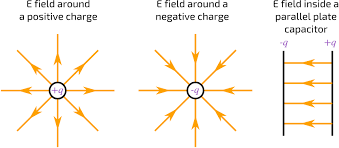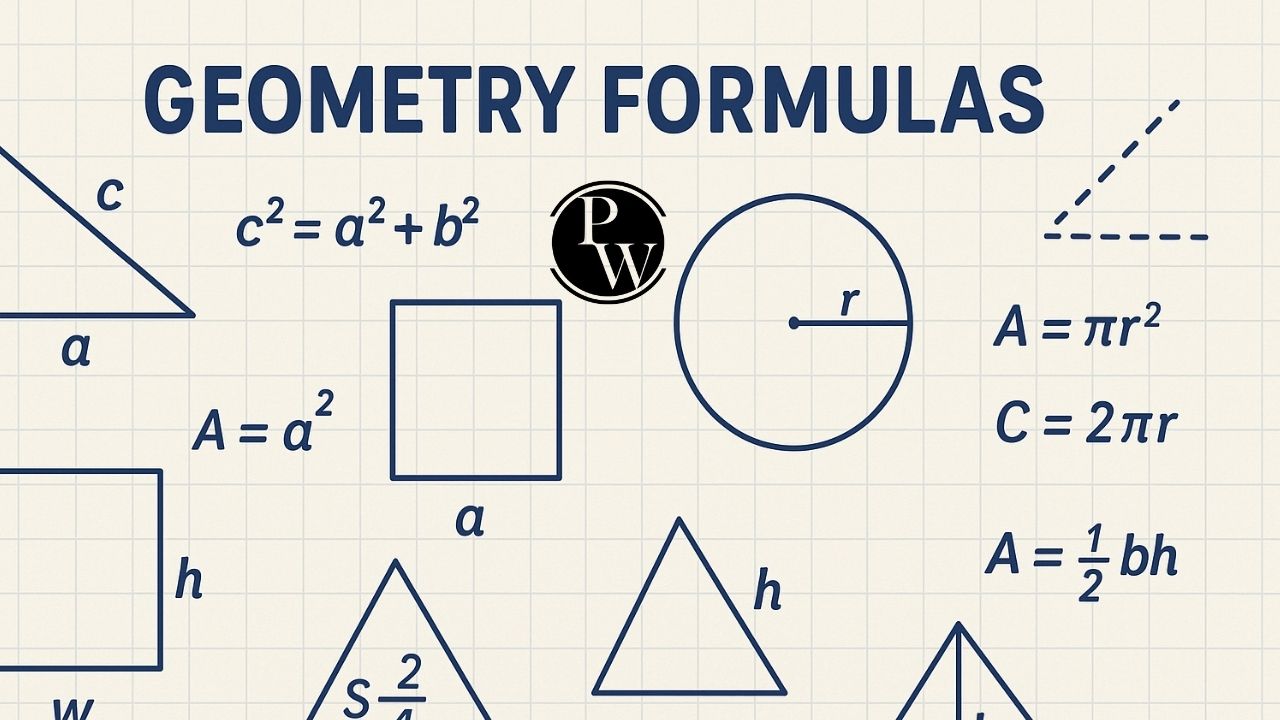

Electric Field Formula: The electric field (E) at a point in space is defined as the force (F) experienced by a positive test charge (q) placed at that point, divided by the magnitude of the test charge.
 Mathematically, it can be expressed as:
E = F / q
Where:
- E is the electric field.
- F is the force experienced by the test charge.
- q is the magnitude of the test charge.
Certainly, let's provide an explanation of the electric field in terms of electric potential (V).
Mathematically, it can be expressed as:
E = F / q
Where:
- E is the electric field.
- F is the force experienced by the test charge.
- q is the magnitude of the test charge.
Certainly, let's provide an explanation of the electric field in terms of electric potential (V).
Also Check - Shear Modulus Formula
Electric Field in Terms of Electric Potential (V)
Electric Field Formula: The electric field (E) and electric potential (V) are closely related concepts in electromagnetism. Electric potential, often referred to as voltage, represents the electric potential energy per unit charge at a point in space. Electric field, on the other hand, describes the force experienced by a test charge at that point. The relationship between electric field and electric potential can be expressed as follows:E = -∇V
Where:
- E is the electric field vector. - ∇ (pronounced "nabla") is the del operator, representing the gradient. - V is the electric potential (voltage). In this equation, the negative sign indicates that the electric field points in the direction of steepest decrease in electric potential. In simpler terms, the electric field tells us the direction in which a positive test charge would move if placed in the electric potential field. To put it even more simply, think of electric potential (V) as a hill or slope, where the height of the hill represents the potential energy. The electric field (E) is like the slope of the hill. A positive test charge placed on the hill will roll down the slope in the direction of the steepest descent, which is the direction of the electric field. So, when working with electric potential (V), keep in mind that the electric field (E) is the "slope" or gradient of the potential, and it indicates the direction and magnitude of the force experienced by a charged particle placed in that field. This relationship between electric field and electric potential is a fundamental concept in electromagnetism and is widely used to analyze and understand electric fields in various practical applications, including circuit analysis and the behavior of charged particles in electric fields.Also Check - Soil Erosion Formula
Solved Examples of Electric Field Formula
Example 1: Calculating the Electric Field Due to a Point ChargeLet's consider a point charge Q = 5 μC placed at a distance of r = 2 meters from a test charge q = 1 μC. Calculate the electric field at this point.
Solution:
Using Coulomb's Law, we can find the force between these charges: F = (k * |Q * q|) / r²Where:
- k is Coulomb's constant (8.99 × 10^9 N m²/C²). F = (8.99 × 10^9 N m²/C² * |5 μC * 1 μC|) / (2 m)² F = (44.95 N m²/C²) / 4 m² F = 11.24 N/C Now, we can find the electric field using the formula E = F / q: E = 11.24 N/C / 1 μC E = 11.24 × 10^6 N/C So, the electric field at this point is 11.24 × 10^6 N/C.Also Check - Efficiency Formula
Example 2: Electric Field Between Two Parallel PlatesConsider two parallel plates with a potential difference of 100 V and a separation of 0.02 meters. Calculate the electric field between the plates.
Solution:
The electric field between parallel plates is given by: E = V / dWhere:
- V is the potential difference. - d is the separation between the plates. E = 100 V / 0.02 m E = 5000 N/C The electric field between the plates is 5000 N/C.Applications of Electric Field Formula
Electric fields find numerous applications in our daily lives and various fields of science and technology. Some notable applications include:- Electrostatic Precipitators: Used to remove dust and pollutants from industrial emissions.
- Capacitors: Essential components in electronic circuits.
- Particle Accelerators: Employed in research to accelerate charged particles.
- Electric Motors: Convert electrical energy into mechanical energy.
- Electrocardiograms (ECGs): Measure the electrical activity of the heart.
Electric Field Formula FAQs
What is the unit of electric field?
Can the electric field be negative?
What is the significance of electric field lines?
How does the electric field differ from the gravitational field?
What is Gauss's Law, and how is it related to electric fields?












